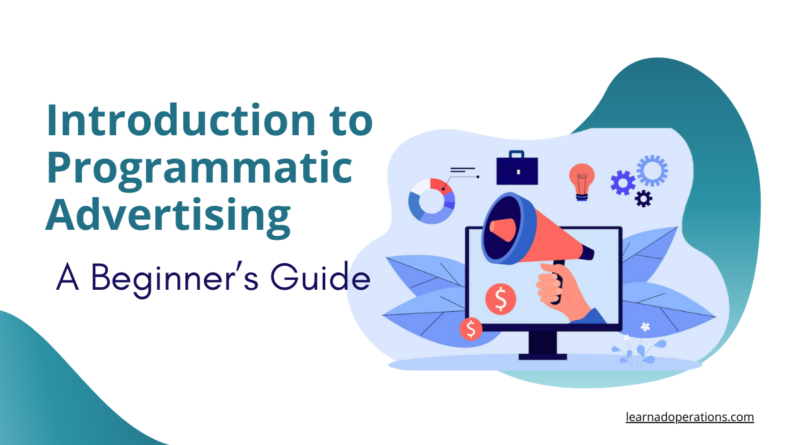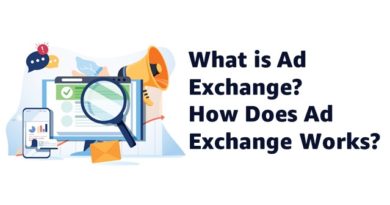Introduction to Programmatic Advertising: A Beginner’s Guide
In today’s digital era, online advertising is moving beyond traditional method of programmatic advertising which includes automated and data-driven strategies to meet the advertising goals.
It is effectively leading the digital advertising revolution. According to eMarketer, programmatic advertising accounted for more than 85% of all the digital display ad spending in the US in 2023. Let’s learn what exactly is programmatic advertising, and how can it benefit your business? In this beginner’s guide, we’ll explain programmatic advertising, explain how it works, and help you get started with online advertising journey.
What is Programmatic Advertising?
It is the automated way of buying and selling the online advertising inventory. Unlike, traditional methods where ad placements are traded directly between advertisers and publishers, but it uses technology to automate the process of in real-time.
Comparison with Traditional Advertising
Traditional advertising is dependent on human negotiation and manual insertion orders to trade the online advertising inventory. In contrast, it leverages algorithms and real-time bidding (RTB) to serve ads efficiently and effectively.
Types of Programmatic Advertising
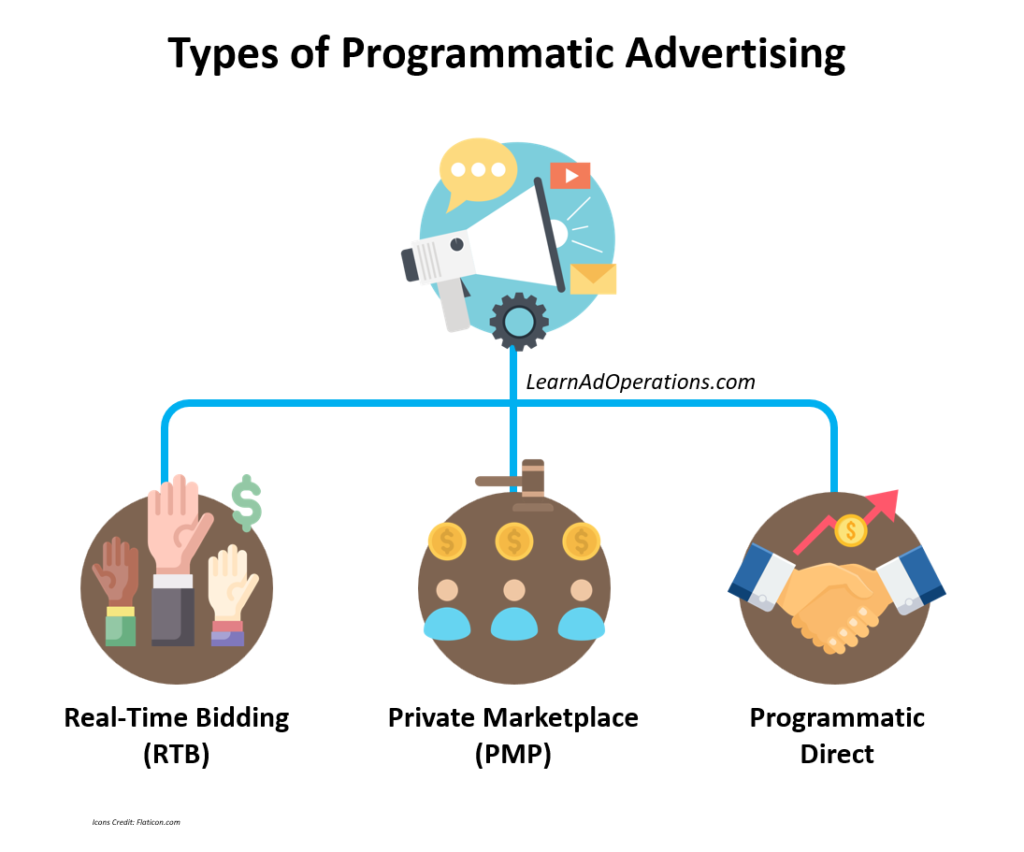
- Real-Time Bidding (RTB): It allow advertisers and publishers to participate in the open auction to buy and sell the ad inventory in real-time.
- Private Marketplace (PMP): PMP invites the advertisers to auction the premium inventory to a selected group of advertisers.
- Programmatic Direct: It creates direct deals between advertisers and publishers without an auction.
How Programmatic Advertising Works
Here’s the process;
- Advertiser’s Role: Demand Side Platform (DSP) will be used by the advertisers to set up their advertising campaigns, target the desired audience, and bid on ad inventory effectively to meet the advertising goals.
- Publisher’s Role: Publisher use Supply Side Platform (SSP) to trade their ad inventory to maximize their revenue.
- Ad Exchange: It is a marketplace where DSPs and SSPs connects and facilitate advertisers and publishers to buy and sell their ad inventory.
- Demand Side Platform (DSP) and Supply Side Platform (SSP): DSP allows advertisers to buy their desired ad inventory and SSPs allows publishers to sell their available inventories to the advertisers in real-time.
Key Technologies: It depends on technologies like cookies and tracking pixels to gather data and optimize online ads. It also helps in delivering personalized ads to the right audience at the right time to drive the conversions and meet the advertising goals.
Benefits of Programmatic Advertising
Here are the high-level benefits:
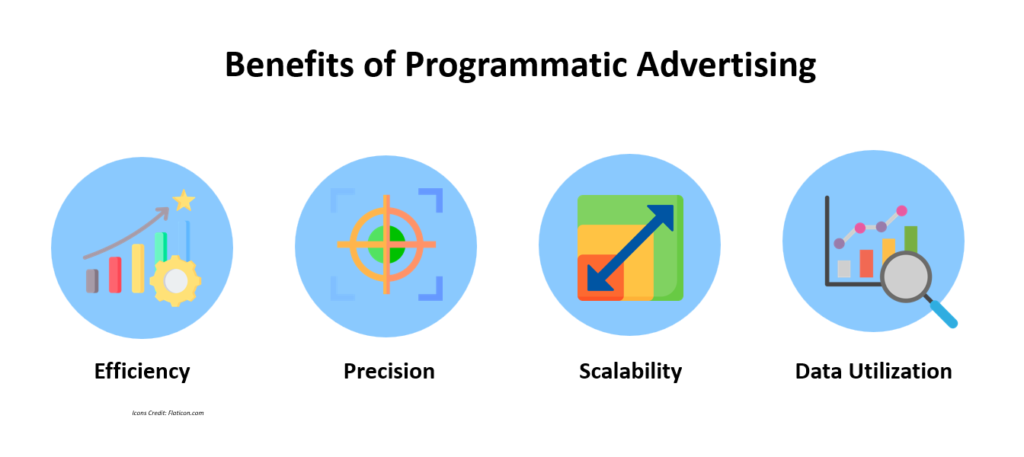
Efficiency: It efficiently buys the ad inventory using the technology platforms, reduce the manual interventions, save time to analyse the performance and resources.
Precision: It precisely targets the audience using the user data and ensuring that the ads are relevant to the targeted audience.
Scalability: Large campaigns can be created quickly and easily by targeting the large or narrow targeting without any additional efforts.
Data Utilization: It leverages the data to provide deeper insights and allowing the advertisers and publishers to optimize the campaigns effectively.
Challenges in Programmatic Advertising:
Here are the high-level challenges:
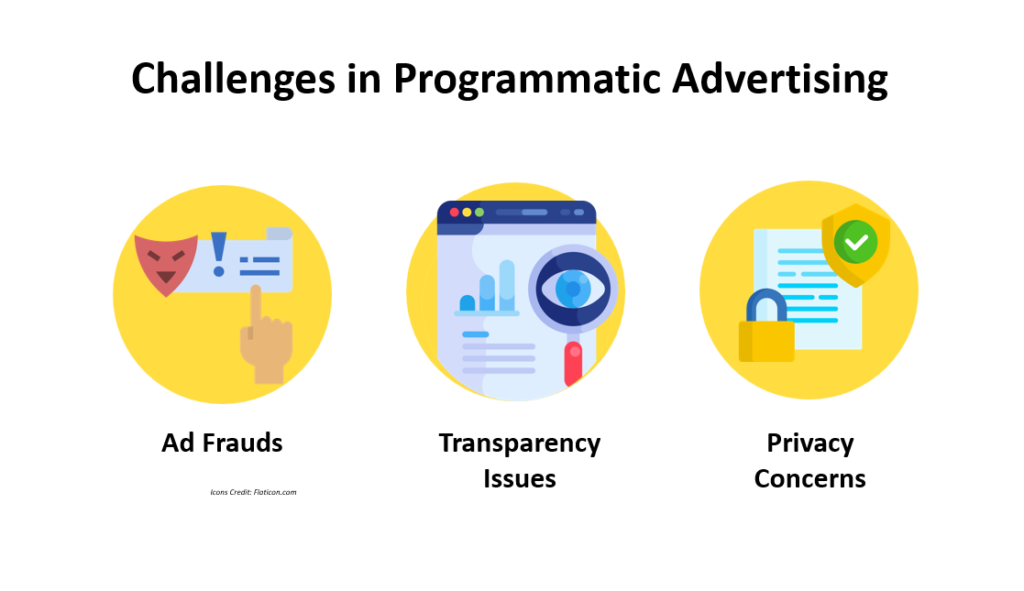
Ad Frauds: Programmatic advertising technology sometimes allows the campaign with malicious scripts which impacts users negatively. Both the Advertisers and Publishers needs to implement the fraud detection and prevention measures to safe guard their users and targeted audience.
Transparency Issues: Advertisers may face difficulties to find their ads and how the budgets are being spent. There are concerns to know in which ad placement their ads are serving after the bidding and how much the 2nd bidder has bided.
Privacy Concerns: Since it is tracking the users’ using cookies and it leads to privacy issues. However, GDPR and CCPA regulations are trying to implement the guardrails to protect the user’s data.
Key Metrics to Measure Performance:
Impressions: This is a metric to calculate the number of times an ad has displayed to the users.
Clicks and Click-Through Rate (CTR): These metrics helps the advertisers to understand how many clicks received and the ratio of clicks to impressions to assess the engagement level.
Conversions: This metrics measures the actions taken by the users through ad like purchased a product or signed up to any services that advertisers are offering.
Return on Ad Spend (RoAS): This is one of the important metrics to measure the profitability of the ad campaign by comparing the revenue generated vs the amount spent on advertising.
Future Trends in Programmatic Advertising
Artificial Intelligence and Machine Learning: AI and ML are transforming programmatic advertising by enhancing the targeting accuracy and campaign optimization.
Connected TV (CTV) and Digital Out-of-Home (DOOH): It is playing a vital role in CTV and DOOH advertising by reaching out to targeted audience precisely.
Increased Focus on Privacy: Regulatory trends continue to shape the programmatic advertising and emphasize on user privacy and data protection.
Are you interested to learn Programmatic Advertising? We have been publishing many articles on the programmatic advertising from basics to understand better. Here’s a link visit and learn Online advertising.
Conclusion:
It offers efficient and effective way to reach the target audience with precision and scalability. By understanding the benefits and challenges, you can leverage programmatic advertising to optimize the advertising efforts. As you begin your journey into programmatic advertising, experiment with different strategies, measure the success and continuously refine the approach to achieve best results.
A few related articles to learn Programmatic Advertising from beginning!

